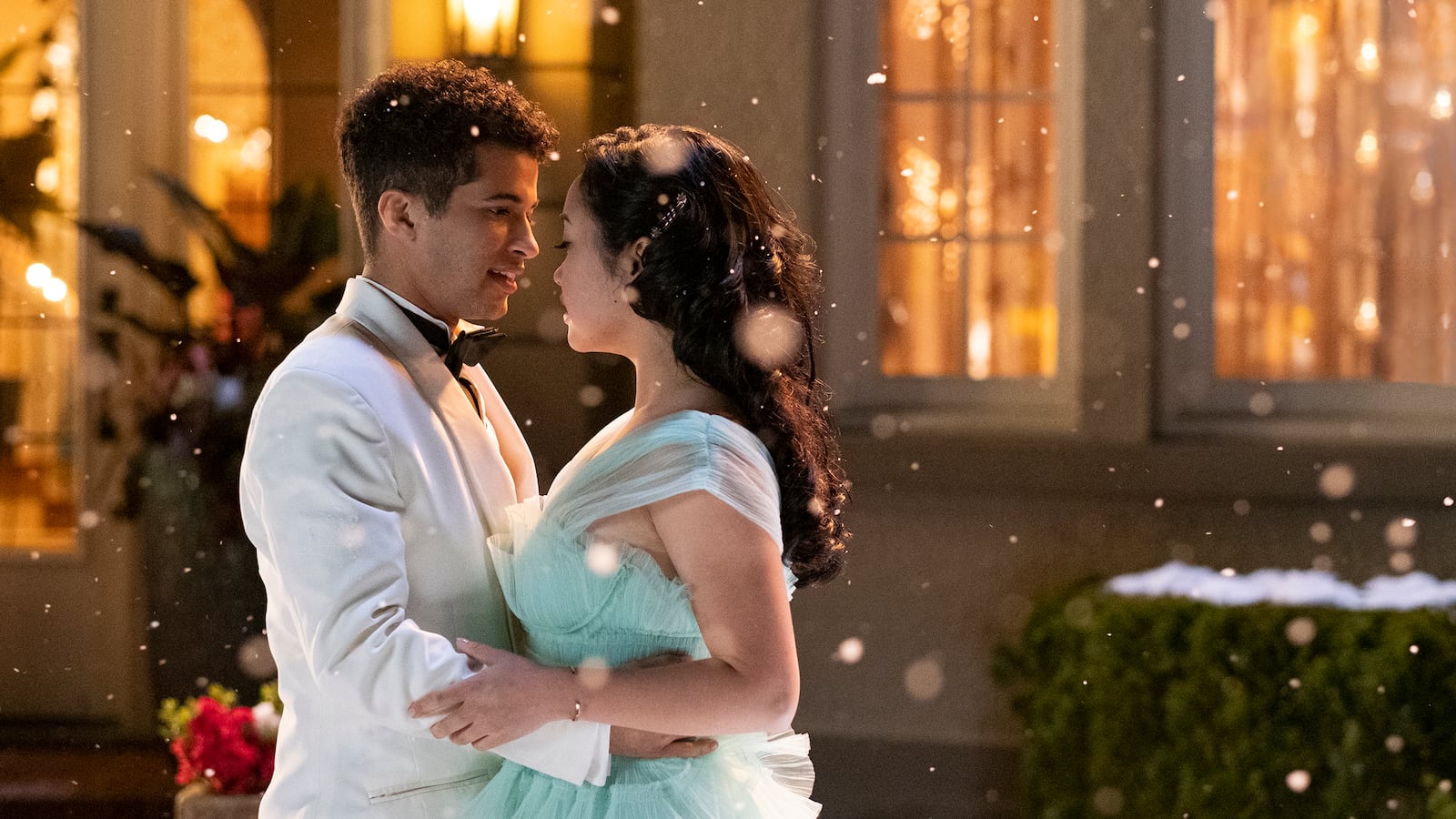You already know how To All the Boys: P.S. I Still Love You ends. I won’t spoil what happens here, but the thing is, there isn’t much to spoil. Ever since To All the Boys I’ve Loved Before took Netflix by storm two years ago, a cult fandom has formed around its central couple—Lana Condor’s helpless romantic high school character, Lara Jean Covey, and Noah Centineo’s warm-hearted jock, Peter Kavinsky. This year’s buzzy sequel promised to upend their “happy ending” from the original with a love triangle, reintroducing Lara Jean with an old middle school crush. But the thing about high school relationship drama is that it’s pretty boring from the outside—and although P.S. I Still Love You maintains the charming, aesthetically mesmerizing energy of its predecessor, the emotional stakes have all but disappeared.
Even if you haven’t read Jenny Han’s original To All the Boys book trilogy—as I, admittedly, have not—you can probably guess most of what happens in this movie. John Ambrose McClaren, reaches out after her little sister, Kitty, sends him her old love letter. And yes, it turns he secretly had a crush on Lara Jean as well. And obviously Peter and John Ambrose used to be best buddies. Who does Lara Jean end up volunteering with on a regular basis? Naturally it’s John Ambrose—thanks to a surprising twist of events, of course. And wouldn’t you know, Peter doesn’t love any of this!
The original To All the Boys, which premiered in the summer of 2018, charmed audiences with its earnest, unabashedly saccharine take on the teen romance. Its John Hughes references were markedly unsubtle, as was its embrace of a trope-y premise: Two teens “pretend” to be in a relationship until it’s clear neither of them is playing anymore. The film’s production design, whimsical and candy-colored, made Lara Jean Covey’s bubbly, romantic worldview not only tangible, but infectious. And perhaps most importantly, the film understood the role family plays in a teenage girl’s lived experience. Lara Jean’s relationships with her sisters, in particular, were a high point, as was the quiet sense of loss she felt around her late mother.
That emotional backdrop grounded To All the Boys, and imbued it with a warmth that extended beyond its core romance—but it’s largely absent in the sequel. P.S. I Still Love You nods at Lara Jean’s late mother, but avoids lingering too deeply on her loss. Lara Jean’s older sister, Margot, is nearly absent from this film, and her younger sibling, Kitty, though still present, seems to land less screen time as well. John Corbett’s chill dad character gets a little romantic B-plot of his own this time around, but it seems as though Lara Jean’s family spends more time on the sidelines, to the movie’s detriment.
Perhaps the biggest problem with P.S. I Still Love You is its insistence on building Lara Jean up as an unambiguously moral girl. Lara Jean Covey is a quintessential ingenue—but while that made her relatable in the first film, here it becomes limiting. Lara Jean admits early on that she’d been wrong to assume getting a boyfriend would automatically make her uninterested in other boys—a realization that could have been an interesting source of tension, had anyone been willing to entertain the notion of Lara Jean toeing a moral boundary. Instead, the film largely takes decisions about such matters out of her hands, seemingly to prevent the character from stumbling into any moral gray areas. Although Lara Jean waits a little too long to explain the situation to John Ambrose and Peter, she’s largely passive. It’s not until she and Peter are already on the rocks—very late in the proceedings—that this movie does anything even remotely interesting with its love triangle.
Charm alone can’t sustain a sequel, and by the time P.S. I Still Love You finally gets to the emotional meat hidden deep, deep inside its center, it’s too late. Condor and Centineo remain as charming as ever, and Condor in particular brings an uncommon amount of warmth, particularly with her murmured, confessional narration. The set and costume design, too, are just as sumptuous; in fact, this installment even adds a senior home with a basement filled with dreamy decorations that look like they came straight out of a Smashing Pumpkins music video circa 1996. But it’s hard to make it through this sequel without checking the clock—repeatedly. There’s simply too much wind-up for a film that, we know, would never deign to actually break its protagonist’s heart.

